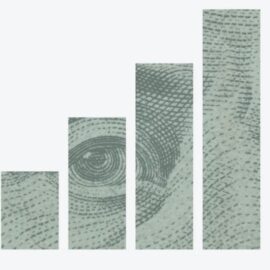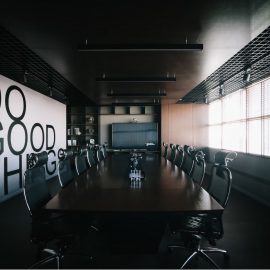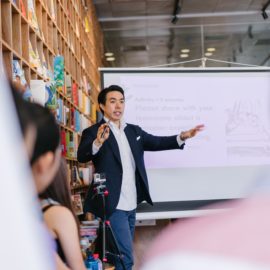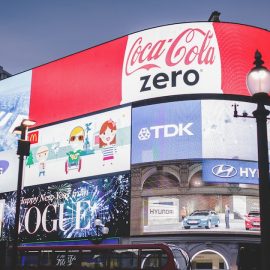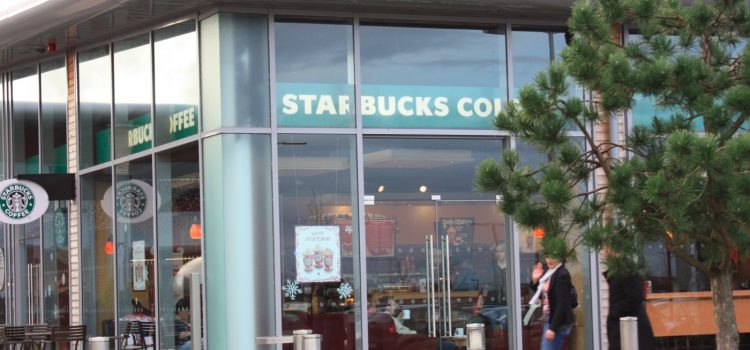

This article is an excerpt from the Shortform book guide to "Onward" by Howard Schultz. Shortform has the world's best summaries and analyses of books you should be reading.
Like this article? Sign up for a free trial here.
What was Starbucks’s plan for success in 2010? How did Starbucks reward its employees in the same year?
In 2010, Starbucks lifted itself out of an economic rut thanks to former CEO Howard Schultz. Schultz’s not only stemmed Starbucks’ financial downturn but also bolstered its reputation as a socially responsible corporation.
Here’s how Schultz planned to keep Starbucks in a positive state after 2010.
The Outcome of Schultz’s Leadership
By realigning Starbucks with its founding values and adapting to contemporary challenges, Schultz ensured that the company was positioned for sustainable success. In quarters 3 and 4 of 2009, Starbucks boasted improved ratings, increased sales, and higher stock values. In 2010, Starbucks’s economics only grew more.
(Shortform note: Starbucks’ financial standing has improved steadily since 2009, except for a brief drop in profits over 2020, which the Covid-19 pandemic can explain. During the pandemic, which caused a recession that was worse than the Great Recession of 2007-2008, Starbucks turned to many of the same recovery strategies Schultz employed to overcome the Great Recession, such as increased innovation and improved customer service. This led to a speedy turnaround and record-breaking profits the following year.)
As a result of these positive trends, Schultz made two announcements in 2010: First, he’d raise employees’ pay and restore benefits that had been cut to save costs. Schultz explains that Starbucks thrives partially because it outperforms its competitors with regard to employee satisfaction, so it was strategic to reward its employees.
(Shortform note: Experts note that while Starbucks employees received enhanced benefits across the board and some merit-based wage increases, most employees still made close to minimum wage and lived at or near the poverty line. Meanwhile, Schultz nearly doubled his income in 2010, earning a total compensation package of $22 million.)
Second, he’d refocus from financial recovery to purposeful international expansion with a focus on China because its market was friendliest to Starbucks due to cultural and economic factors, including a growing need for third spaces. In pursuing global expansion, he’d carry forth the lessons he learned during the recession, including the importance of innovation and cost efficiency, to ensure future success.
(Shortform note: Despite doubts owing to China’s centuries-long cultural affinity for tea, Schultz’s plan to expand into China was successful. Experts say Starbucks penetrated the Chinese market by marketing the Western coffee experience as a status symbol and designing its presence with traditional Chinese values like community in mind. China also typically embraces a culture of overwork, which may have helped fuel demand for Starbucks’ caffeinated drinks.)
| A Rocky Ending to Schultz’s Starbucks Career In 2016, Schultz gave up his position as CEO to become chairman of the board again because he wanted to explore the potential to upscale Starbucks for a more elite coffeehouse experience. But in 2022, Schultz returned for a third stint in the CEO’s office—this time, he was only stepping up temporarily to fill the space left behind when CEO Kevin Johnson retired. According to experts, Schultz has always been deeply emotionally invested in Starbucks’ performance and reputation, even when he wasn’t in a formal position of authority, and Johnson was sometimes frustrated by Schultz’s close involvement. When Schultz reprised his role as CEO, he made radical changes to Starbucks’ executive staff and internal policies, just as he’d done in 2008. Schultz also faced a new challenge—the unionization of Starbucks employees across the US—which he staunchly opposed and was found to illegally interfere with. This controversy influenced his 2023 decision to step down from the CEO position earlier than expected and, later that year, to resign from Starbucks’ board, vowing never to return. As of 2024, the company is still beleaguered by boycotts over its anti-union activities, which include a lawsuit against the union over pro-Palestine statements it made. |

———End of Preview———
Like what you just read? Read the rest of the world's best book summary and analysis of Howard Schultz's "Onward" at Shortform.
Here's what you'll find in our full Onward summary:
- Why Starbucks CEO Howard Schultz left and later returned to the company
- Schultz’s three-part strategy that saved Starbucks from potential ruin
- Why millions of people love Starbucks’ coffeehouse experience

